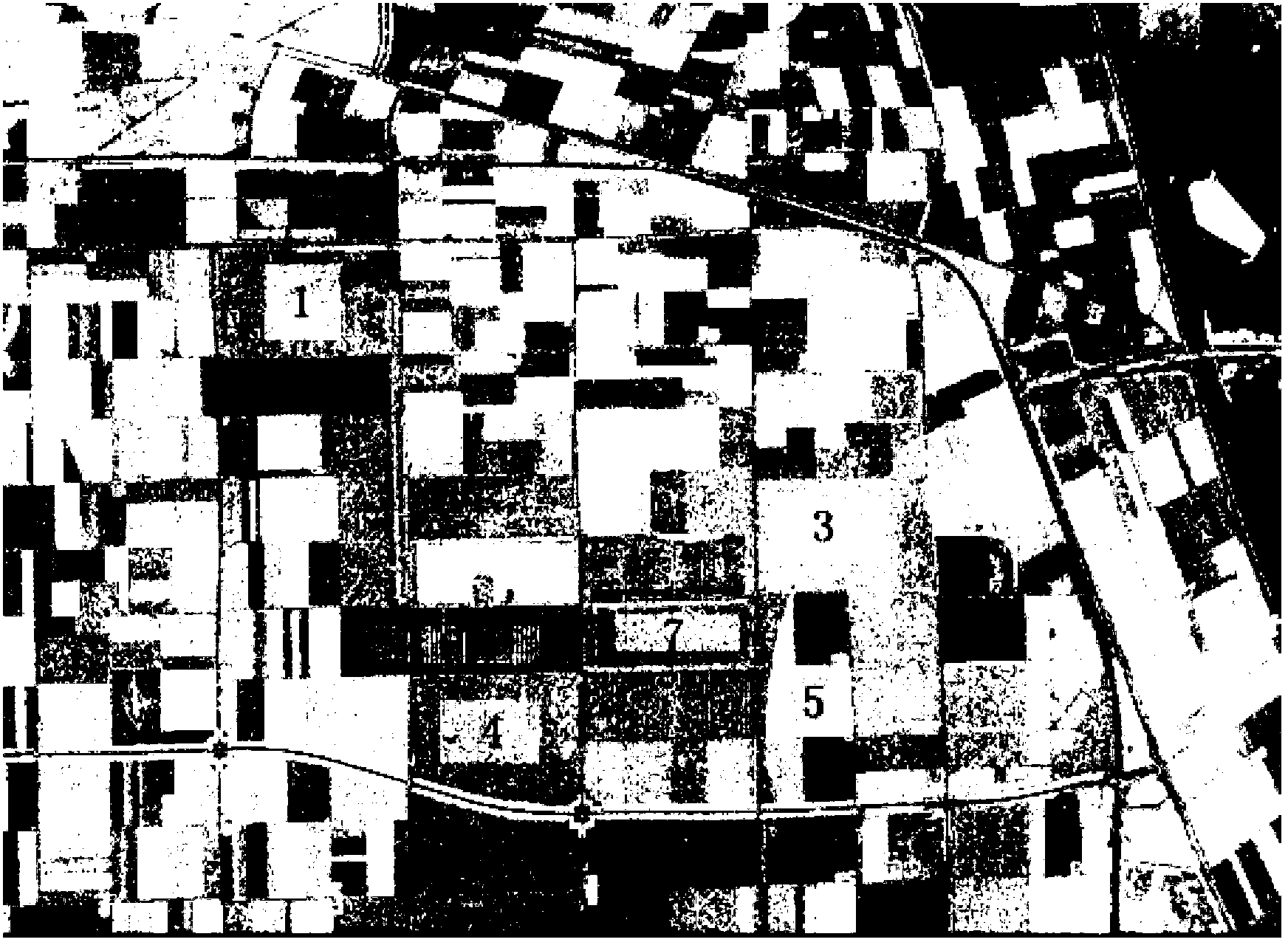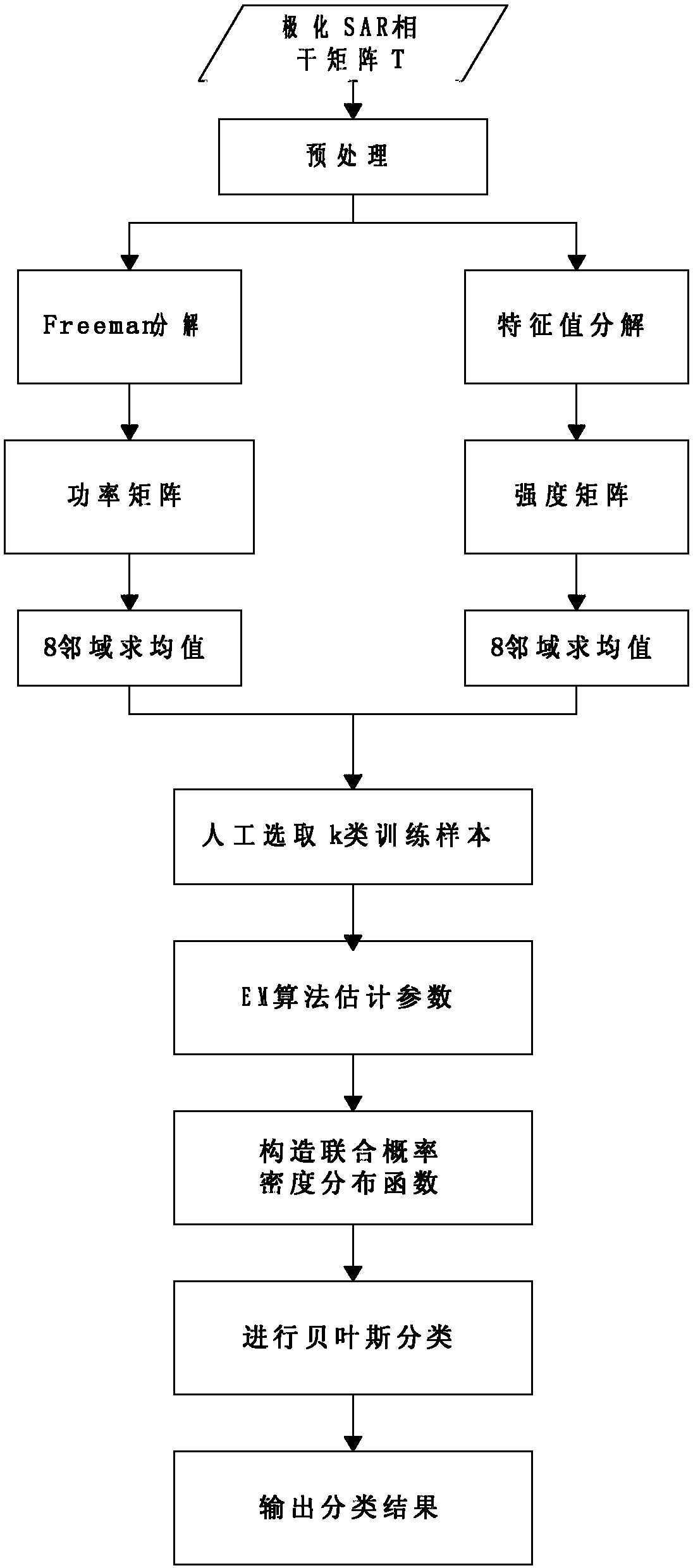Method for classifying polarimetric synthetic aperture radar (SAR) images on the basis of scattered power and intensity combined statistics
A technology of scattering power and classification method, which is applied in the field of image processing, can solve problems such as misclassification and difficult classification, and achieve the effect of improving classification accuracy and improving universality
- Summary
- Abstract
- Description
- Claims
- Application Information
AI Technical Summary
Problems solved by technology
Method used
Image
Examples
Embodiment Construction
[0029] refer to figure 1 , the concrete implementation of the present invention is as follows:
[0030] Step 1. Take the coherence matrix T of the polarimetric SAR image to be classified as input, and the size of T is 3×3×z, where z is the total number of image pixels.
[0031] Step 2. Using the Lee filter to denoise the coherence matrix T to obtain a denoised coherence matrix T'.
[0032] Polarimetric SAR data contains a lot of noise, and the original data needs to be denoised before classification to reduce the impact of noise on the classification results. The noise of polarimetric SAR data belongs to multiplicative and additive noise. The general denoising method is not ideal for polarimetric SAR denoising. Here, the Lee filter is used to denoise the coherence matrix T, and the denoised coherence matrix T' is obtained .
[0033] Step 3. Perform Freeman decomposition on the denoised coherence matrix T', extract the volume scattering power of the polarimetric SAR data, an...
PUM
 Login to View More
Login to View More Abstract
Description
Claims
Application Information
 Login to View More
Login to View More - R&D
- Intellectual Property
- Life Sciences
- Materials
- Tech Scout
- Unparalleled Data Quality
- Higher Quality Content
- 60% Fewer Hallucinations
Browse by: Latest US Patents, China's latest patents, Technical Efficacy Thesaurus, Application Domain, Technology Topic, Popular Technical Reports.
© 2025 PatSnap. All rights reserved.Legal|Privacy policy|Modern Slavery Act Transparency Statement|Sitemap|About US| Contact US: help@patsnap.com



